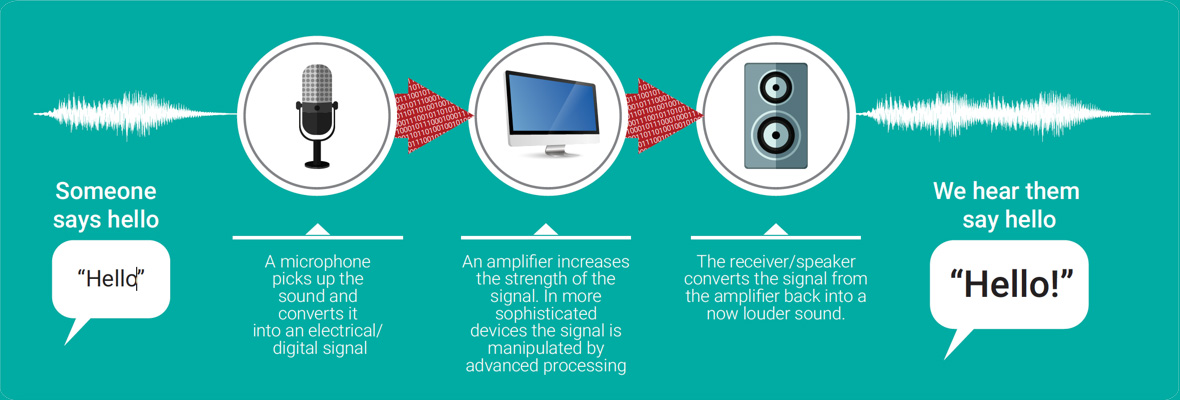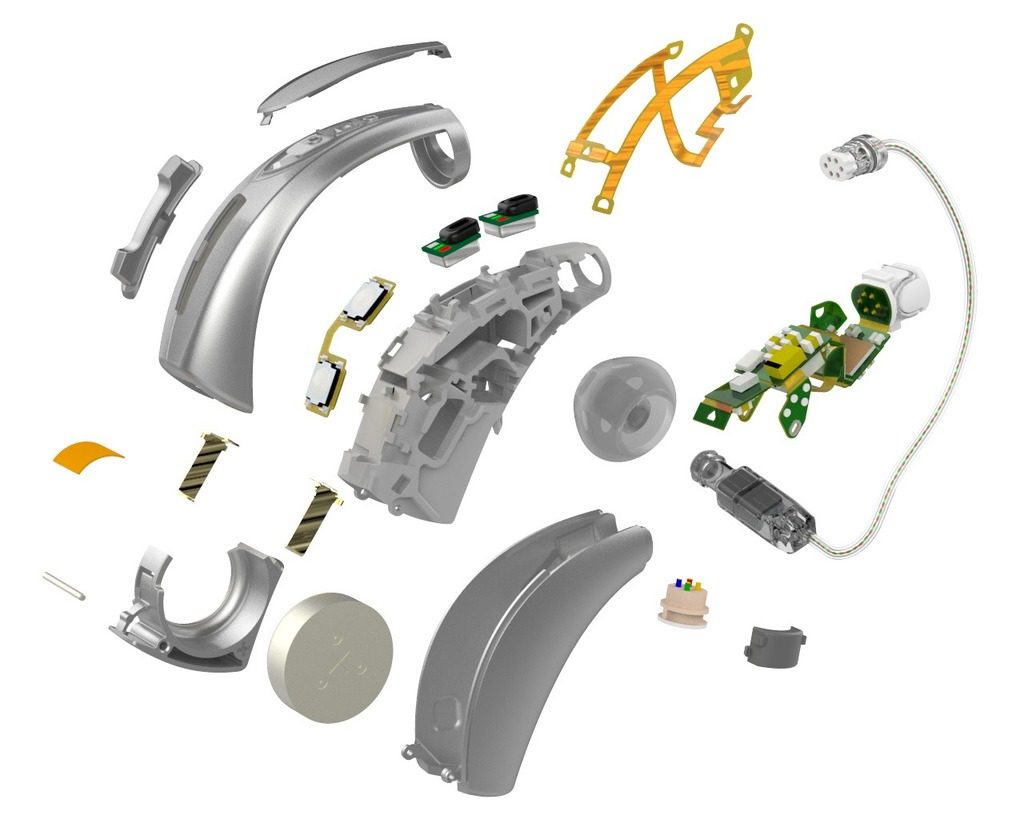How Hearing Aids Work

AGE OLD PROBLEM, MODERN-DAY SOLUTION
Hearing loss has been around since the beginning of time. While it’s difficult to pinpoint exactly when people began experimenting with ways to improve their hearing, (like using a cupped hand), we know that in 1588, Italian physician and scientist, Giambattista della Porta described early hearing aids in his published work Magia Naturalis1.
Needless to say, hearing aids have come a long way since their early beginning. But the principle behind hearing aids, amplification, is still considered an indispensable part of hearing loss treatment and rehabilitation.
AN AMPLIFIER FOR YOUR EAR
No matter what size or styles, all hearing aids consist of these four components:

1
Microphone
2
Amplifier
3
Speaker (Receiver)
4
Power Supply (Batteries)
-
Microphone
-
Amplifier
-
Speaker (Receiver)
-
Power Supply (Batteries)
Microphones and receivers are transducers, meaning they convert energy from one form to another. The microphone gathers and converts sound into electrical signals.
The receiver gathers electrical signals from the amplifier and converts them back into sound.
Located between the microphone and receiver, the amplifier increases the power of the signal supplied by the microphone before transmitting it to the receiver, which sends it to your ears.
The battery supplies the necessary electrical energy for the microphone, receiver and amplifier.
Time, Practice & Experience
STRATEGIES ON IMPROVING AND RESTORING YOUR HEARING HEATLH

Smart steps for first-time wearers
Regardless if you are a new hearing aid user or have years of experience, it takes deliberate practice to reactivate those brain areas key in processing sound. These are the first steps in improving your hearing health:
- Set realistic expectations
- Wear your Hearing Aids at home in a quiet environment for the first few days
- Wear your Hearing Aids for only a few hours each day for the first two weeks
- Take breaks when you feel tired
- Read out loud for 10-15 minutes a day or have someone read to you while you are reading quietly along
- Practice having a conversation with your spouse or a loved one
- Listen every day to music, especially classical like Mozart
- Come in for your aftercare appointments and quarterly rehabilitation assessments if necessary
Hearing aids won’t improve your hearing and cognitive abilities overnight it takes work and time to restore your hearing ability to its best possible.

Slow & steady wins the race
Unlike eyeglasses, which give you immediate, positive results, hearing aids are part of a wider treatment and rehabilitation plan. How they sound, how they feel, even getting in the routine of wearing them every day takes adaptation and training. With time and patience, you’ll come to understand all the benefits these powerful “mini computers” can have on your life. You’ll find useful tips and tools in this brochure to help you achieve better hearing.
SUCCESS BEGINS WITH A POSITIVE ATTITUDE
Abraham Lincoln once said, “Most folks are about as happy as they make up their minds to be.” He probably wasn’t talking about people with hearing aids — but it still holds true.
Effort and a positive attitude are critical to improved hearing. Much of your success with your hearing aids will depend on your desire to learn and a determination to increase your ability to hear. To achieve better hearing, you must work at it daily. The ability to hear again has to be relearned — not just purchased.
HEAR BETTER FASTER
One discipline common to almost everyone who successfully made the transition to hearing aids is practice. Just as personal training for our bodies encompasses more than simple strength training, keeping our hearing fit involves more than just our ears.
By putting effort into personal hearing training, you can improve auditory memory, attention and recognition of speech in noise.

Hearing and understanding involves more than just your ears
Although the ears play an important role in receiving sounds, the process of hearing really happens in the brain.
When sounds arrive at the ears all components are encoded in up to 36,000,000 electrical impulses per ear (ex., just like 360,000,000 pixels of an image).
The brain arranges these impulses into high resolution patterns instantaneously, automatically and effortlessly.
These impulses travel to different areas of the brain called the auditory cortices. The left auditory cortex processes mainly phonemes and sequential differences and the right side processes tonal differences and prosody.
Ultimately the brain matches these impulse patterns into patterns in our auditory memory with assigned meanings. Then, we comprehend.

 Find Us
Find Us